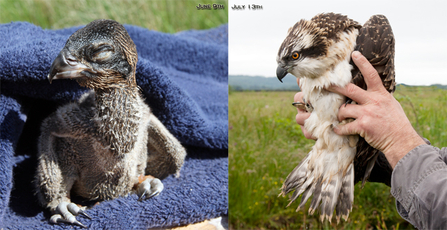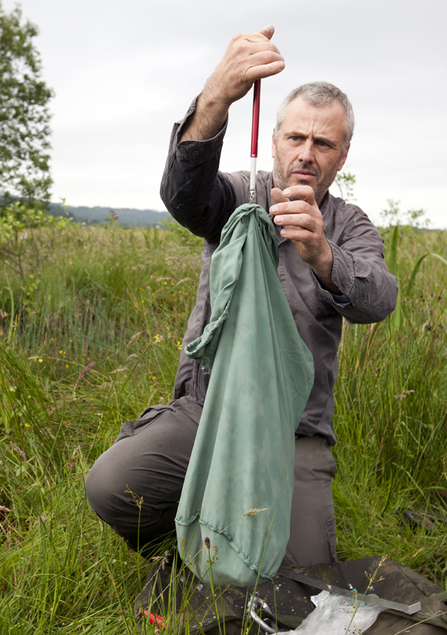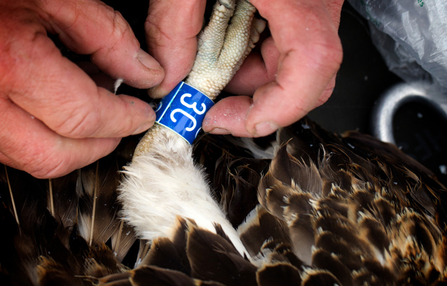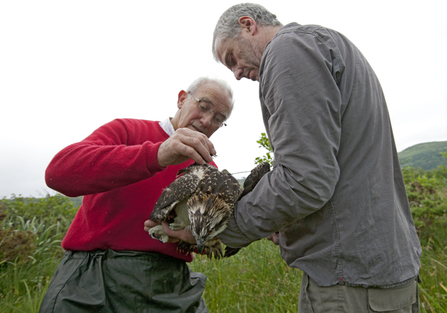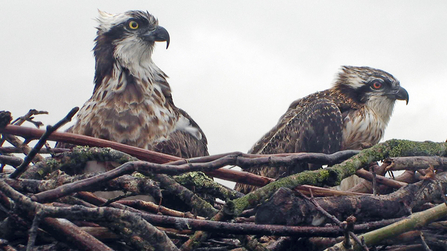July, Friday 13th didn't start very well. At 5am, it was raining and misty, not the kind of weather to be ringing an osprey. Ceulan was 45 days old, and Roy Dennis and Tony Cross had joined the Dyfi osprey team to ring young Ceulan and, if he was healthy, tag him with a satellite transmitter.
By 7am, the rain had stopped and by 9am, Ceulan looked dry in the nest. After the umpteenth coffee, we decided that the weather had, probably for the first time this year, been kind to us. We quickly gathered our things, set off, and by 9.30am, Tony had the ladder up to the nest and was bringing Ceulan gently to the ground.
I must admit, I had a tear in my eye when I saw Ceulan again - he looked a lot different to the last time we met.
Same bird, same place, five weeks apart

